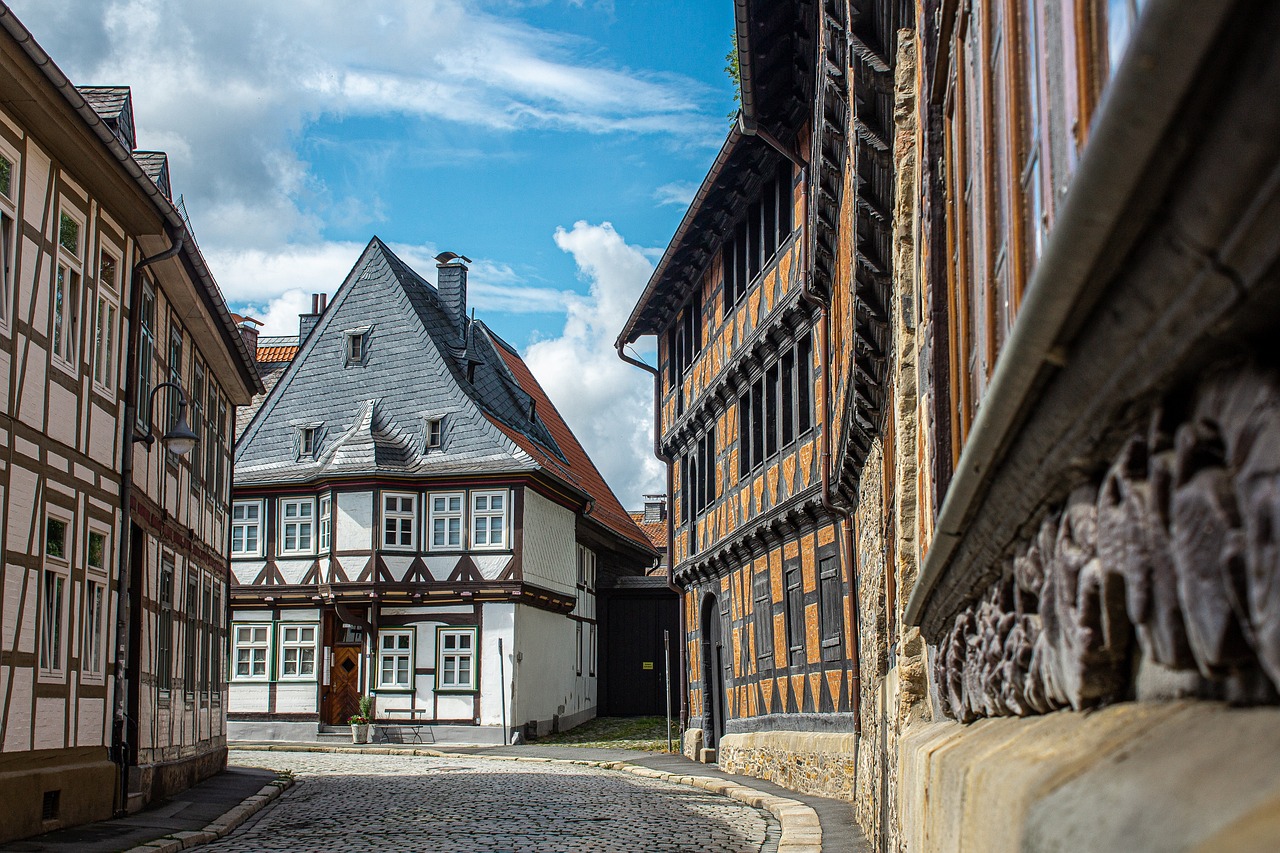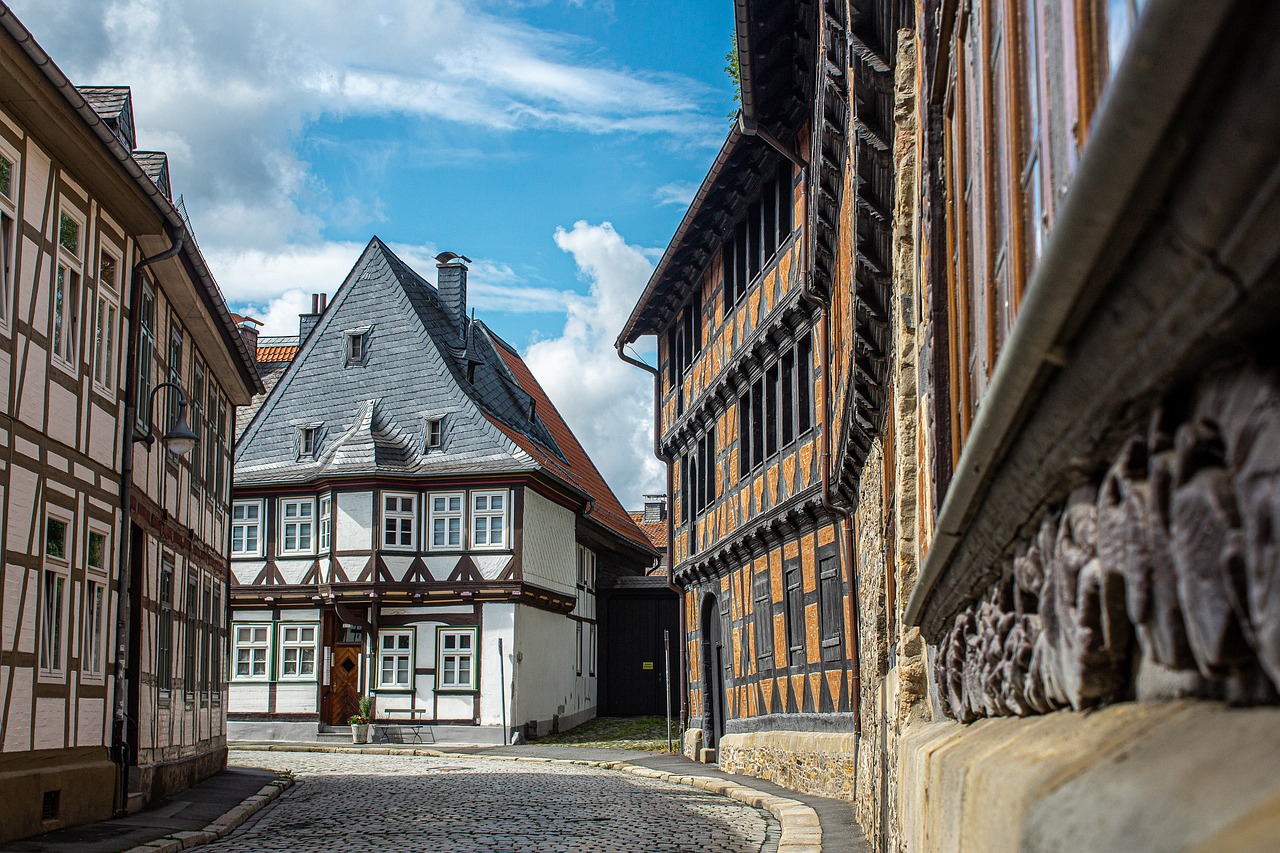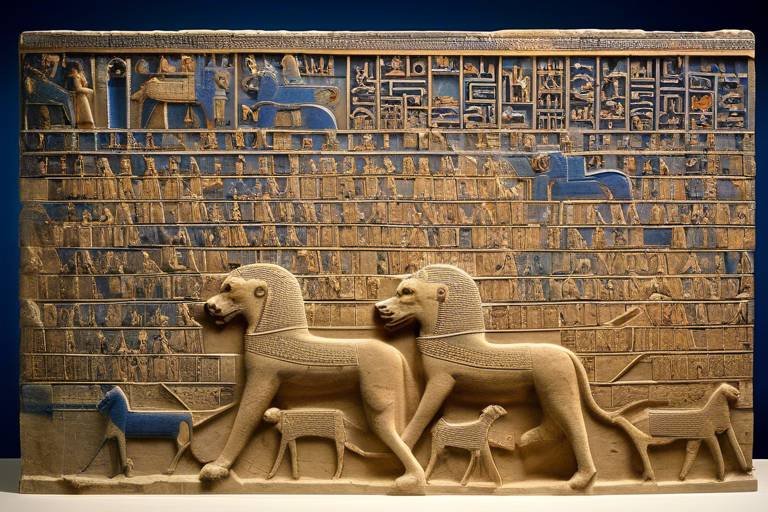The Secrets of the Ancient Silk Road
Embark on a journey through time as we unveil the enigmatic secrets of the ancient Silk Road, a legendary network of trade routes that transcended continents, bridging East and West in a tapestry of commerce, culture, and innovation.
Tracing back to its origins in ancient China, the Silk Road emerged as a lifeline of exchange, connecting distant lands and diverse civilizations in a web of mutual benefit and discovery. Over centuries, this intricate network expanded its reach, weaving through Asia, Europe, and Africa, laying the groundwork for unprecedented economic growth and cultural fusion.
At the heart of this grand tapestry lay a treasure trove of trade goods that captivated the imaginations of merchants and travelers alike. From the luxurious silk of the East to the exotic spices of the South, the Silk Road became a bustling marketplace of precious commodities, reshaping global trade and influencing the development of societies along its path.
Yet, beyond the allure of riches, the Silk Road harbored a deeper significance in the annals of history. It was a conduit of innovation, a crucible of cross-cultural exchange that sparked technological advancements and artistic renaissances. The introduction of silk to the West and the melding of diverse traditions gave birth to a tapestry of creativity and ingenuity.
As caravans traversed deserts and mountains, they carried not only goods but also ideas, beliefs, and languages, fostering a rich tapestry of cultural exchange. The Silk Road became a melting pot of diversity, where East met West, and North mingled with South, shaping the collective identity of civilizations and nurturing a spirit of interconnectedness.
Yet, the road was not without its perils. Travelers braved treacherous terrains, political upheavals, and the ever-looming threat of banditry and disease. These challenges, though daunting, forged a resilience that defined the Silk Road and its enduring legacy.
As the winds of change swept across the seas, the Silk Road gradually faded into obscurity, its once bustling routes giving way to maritime trade and shifting political landscapes. However, its legacy endured, a testament to the power of connectivity and cultural exchange in shaping the world we inhabit.
In the modern era, efforts to revive the spirit of the Silk Road have emerged, with initiatives like the Belt and Road Initiative seeking to reignite economic cooperation and cultural dialogue among nations along its historic path. The echoes of the past reverberate in the present, reminding us of the enduring lessons of unity and collaboration.
As we reflect on the timeless wisdom of the ancient Silk Road, we are reminded of the importance of embracing diversity, fostering understanding, and building bridges of cooperation in a world that is more interconnected than ever before. The legacy of the Silk Road lives on, a beacon of hope and inspiration for a future built on mutual respect and shared prosperity.

Origins and Development
Exploring the historical significance and cultural impact of the ancient Silk Road, a network of trade routes connecting East and West, facilitating the exchange of goods, ideas, and technologies between different civilizations.
Tracing the origins of the Silk Road in ancient China, it all began as a humble path for local trade. However, as the demand for exotic goods grew, the route expanded its reach, linking regions from Asia to Europe and Africa. This expansion wasn't just about commerce; it was a journey of cultural exchange and mutual discovery. The Silk Road became a bustling highway where not only goods but also ideas and beliefs traveled freely, shaping the development of societies along the way.
One of the defining features of the Silk Road was its ability to transcend geographical boundaries and connect distant lands. As caravans traversed deserts and mountains, they carried not just merchandise but also the essence of different cultures. This cultural diffusion was like a tapestry woven from threads of diverse traditions, creating a rich and vibrant fabric of interconnected civilizations.
The development of the Silk Road wasn't just about economic transactions; it was a story of human ingenuity and resilience. Merchants and travelers braved harsh terrains, navigated political complexities, and overcame language barriers to forge enduring connections. Each step along the Silk Road was a testament to the human spirit's capacity for exploration and adaptation.
As the Silk Road evolved over centuries, it became more than just a trade route; it transformed into a symbol of unity amidst diversity. The mingling of cultures and ideas along its path gave rise to new forms of art, architecture, and technology, enriching the tapestry of human civilization. The Silk Road wasn't just a road of silk; it was a road of dreams, aspirations, and endless possibilities.
The legacy of the Silk Road endures to this day, reminding us of the power of connection and exchange. In a world where borders seem to divide us, the Silk Road stands as a testament to the fact that bridges can be built where walls once stood. Its origins may lie in the ancient past, but its spirit of cooperation and mutual respect is a timeless lesson for all of humanity.

Key Trade Goods
When delving into the historical tapestry of the ancient Silk Road, it becomes evident that the exchange of key trade goods played a pivotal role in shaping the course of civilizations. Among the plethora of commodities traversing the vast network of trade routes, silk stands out as the most iconic and sought-after product. The luxurious fabric, originating from the skilled hands of Chinese artisans, captivated the imaginations of distant lands and sparked a global craze for this shimmering textile.
Accompanying silk on its journey were an array of spices that infused the markets with exotic aromas and flavors, tantalizing the senses of traders and consumers alike. The aromatic allure of spices such as cinnamon, pepper, and cloves not only added richness to culinary delights but also held medicinal and preservative properties that were highly valued in ancient societies.
Furthermore, the Silk Road served as a conduit for the exchange of exquisite ceramics, renowned for their intricate designs and superior craftsmanship. These delicate vessels, adorned with vibrant patterns and glazes, not only carried precious goods but also carried cultural symbolism and artistic expression across vast distances, bridging diverse civilizations.
Precious metals, including gold and silver, also played a significant role in the trade along the Silk Road, serving as a universal form of currency and a symbol of wealth and power. The shimmering allure of these metals transcended linguistic barriers and cultural divides, establishing a common standard of value that facilitated economic transactions and fostered prosperity along the trade routes.
As these key trade goods traversed the ancient Silk Road, they not only fueled economic growth and prosperity but also catalyzed cultural exchanges and technological innovations that reverberated across continents. The legacy of these commodities continues to resonate in the modern world, underscoring the enduring impact of the ancient Silk Road on global commerce and cultural interconnectedness.

Role of Silk and Innovation
Exploring the historical significance and cultural impact of the ancient Silk Road, a network of trade routes connecting East and West, facilitating the exchange of goods, ideas, and technologies between different civilizations.
Silk, a luxurious fabric coveted by many, played a pivotal role in the ancient Silk Road, not only as a trade commodity but also as a catalyst for innovation. The intricate process of silk production in ancient China was a closely guarded secret, with the Chinese Empire holding a monopoly on silk for centuries. The introduction of silk to the West sparked a revolution in fashion and textiles, influencing the development of new weaving techniques and designs. This exchange of silk also led to the cross-pollination of ideas and technologies, fostering a climate of creativity and invention along the Silk Road.
Moreover, the transmission of silk-making techniques from China to the West spurred technological advancements in both regions. The transfer of knowledge and skills between cultures resulted in the refinement of silk production methods, leading to the enhancement of textile industries on a global scale. The demand for silk encouraged the creation of trade networks and infrastructures, promoting economic growth and cross-cultural interactions.
Furthermore, the Silk Road served as a melting pot of creativity and ingenuity, where artisans and craftsmen from diverse backgrounds exchanged ideas and expertise. The convergence of different artistic traditions along the Silk Road gave rise to innovative designs and styles, blending Eastern and Western aesthetics in a harmonious fusion. This cultural exchange not only enriched the artistic landscape but also laid the foundation for future artistic movements and trends.
In essence, the role of silk on the ancient Silk Road transcended mere trade; it symbolized the interconnectedness of civilizations and the power of innovation through cultural exchange. Silk was not just a fabric; it was a thread that wove together the tapestry of human creativity and ingenuity, leaving a lasting legacy of innovation and inspiration for generations to come.

Cultural Exchange and Influence
The ancient Silk Road was not merely a route for the exchange of goods; it was a vibrant pathway where cultures intertwined, ideas flourished, and traditions merged like colors on an artist's palette. Imagine a bustling marketplace where merchants from distant lands bartered not only commodities but also stories, beliefs, and customs. This cultural cross-pollination gave rise to a tapestry of diversity that continues to shape our world today.
As caravans traversed deserts and mountains, languages echoed through the air like melodies, carrying whispers of distant lands and exotic practices. Buddhist monks from India shared teachings with Chinese scholars, while Persian astronomers exchanged knowledge with Greek philosophers. The Silk Road became a melting pot of intellectual discourse, a meeting point where the boundaries between civilizations blurred and new horizons emerged.
Artisans honed their crafts, blending techniques and styles to create unique masterpieces that bore the imprint of multiple cultures. Intricate silk garments adorned Roman nobles, Chinese porcelain graced the tables of Persian kings, and spices from the East infused European cuisines with a tantalizing allure. The Silk Road was a conduit for creativity, a bridge that connected distant shores and fostered a shared aesthetic sensibility.
Religions also found fertile ground along the Silk Road, spreading like wildfire as pilgrims carried sacred texts and spiritual teachings from one end to the other. Buddhist stupas rose in the heart of Central Asia, Zoroastrian fire temples illuminated the Persian night, and Christian churches dotted the landscape of the Byzantine Empire. The Silk Road became a corridor of faith, where beliefs intertwined and transformed, creating a rich tapestry of religious diversity.
Through this intricate web of cultural exchange, the Silk Road not only shaped the identities of the civilizations it connected but also laid the foundation for a globalized world where diversity is celebrated and differences are embraced. The legacy of the Silk Road lives on in the mosaic of traditions, languages, and beliefs that define our modern society, reminding us of the beauty that emerges when cultures collide and converge.

Challenges and Perils
Exploring the historical significance and cultural impact of the ancient Silk Road, a network of trade routes connecting East and West, facilitating the exchange of goods, ideas, and technologies between different civilizations.
Tracing the origins of the Silk Road in ancient China and its expansion over centuries, linking regions from Asia to Europe and Africa, fostering economic growth and cultural exchanges along the way.
Highlighting the valuable commodities traded along the Silk Road, including silk, spices, ceramics, and precious metals, shaping global commerce and influencing the development of societies.
Exploring the pivotal role of silk production in ancient China, its introduction to the West, and the technological innovations that emerged as a result of cross-cultural interactions on the Silk Road.
Examining how the Silk Road facilitated the exchange of ideas, religions, languages, and artistic styles among diverse civilizations, leading to the enrichment and transformation of cultural practices worldwide.
Discussing the various challenges faced by travelers and merchants on the Silk Road, including harsh terrains, political conflicts, bandit attacks, and the spread of diseases, which shaped the route's history.
Investigating the factors that contributed to the decline of the Silk Road, such as the rise of maritime trade routes and political shifts, while exploring its enduring legacy in shaping global interconnectedness and cultural diversity.
Exploring the modern efforts to revive the Silk Road through initiatives like the Belt and Road Initiative, aiming to strengthen economic cooperation and cultural ties among countries along the historic route.
Reflecting on the lessons that the ancient Silk Road teaches us about the importance of cross-cultural exchange, cooperation, and understanding in fostering peace, prosperity, and mutual enrichment in today's interconnected world.
Traversing the ancient Silk Road was not for the faint-hearted. Merchants and travelers faced a myriad of challenges and perils that tested their resilience and determination. From navigating treacherous mountain passes to enduring harsh desert climates, the physical obstacles were daunting. Moreover, political conflicts between empires often led to disruptions in trade, making the journey unpredictable and risky. Bandit attacks were a constant threat, with ruthless raiders lurking in remote areas ready to pounce on unsuspecting caravans. The spread of diseases along the route also posed a significant danger, with illnesses like the bubonic plague decimating populations. Despite these challenges, the allure of the Silk Road's riches and opportunities kept traders braving the dangers, creating a legacy of courage and adventure that echoes through the annals of history.
Coming soon...

Decline and Legacy
As the Silk Road flourished over the centuries, it also faced numerous challenges and perils that ultimately contributed to its decline and left a lasting legacy on global trade and cultural exchange. The once thriving network of trade routes, connecting the East and West, began to face a series of obstacles that led to its gradual decline.
One of the significant factors that played a role in the decline of the Silk Road was the emergence of alternative trade routes, particularly maritime routes. The development of sea trade routes offered a faster and more efficient way to transport goods, reducing the reliance on the traditional overland Silk Road routes.
Political shifts and conflicts also took a toll on the Silk Road, as changing power dynamics and the rise of new empires altered the trade landscape. The instability in certain regions along the Silk Road due to political conflicts disrupted the flow of goods and travelers, impacting the economic viability of the route.
Moreover, the threat of bandit attacks and the challenges posed by harsh terrains further weakened the Silk Road's prominence as a major trade route. Merchants and travelers had to navigate through treacherous landscapes and contend with the risk of theft and violence, making the journey increasingly perilous.
Additionally, the spread of diseases along the Silk Road, facilitated by the movement of people and goods, posed a significant health risk to those traveling the route. Outbreaks of diseases such as the bubonic plague had devastating consequences on both the population and the economy, further deterring trade along the Silk Road.
Despite its eventual decline as a primary trade route, the legacy of the Silk Road endures to this day. The cultural exchanges, innovations, and interconnectedness fostered by the ancient trade network have left a lasting impact on global history and continue to shape modern interactions between East and West.

Rediscovery and Revival
As the world continues to evolve, there has been a resurgence of interest in reviving the ancient Silk Road. Initiatives like the Belt and Road Initiative, proposed by China, aim to rejuvenate the historical trade routes and strengthen economic cooperation among countries spanning Asia, Europe, and Africa. This modern revitalization seeks to not only enhance trade and infrastructure development but also foster cultural ties and mutual understanding among nations that were once connected by the Silk Road.
Through the Belt and Road Initiative, countries are working together to build new transportation networks, improve connectivity, and promote trade partnerships. The initiative serves as a testament to the enduring legacy of the Silk Road and the potential it holds for shaping the future of global commerce and cultural exchange. By reviving the spirit of collaboration and innovation that characterized the ancient Silk Road, nations are striving to create a more interconnected and prosperous world for generations to come.

Lessons for the Present
Exploring the historical significance and cultural impact of the ancient Silk Road, a network of trade routes connecting East and West, facilitating the exchange of goods, ideas, and technologies between different civilizations.
As we unravel the mysteries of the ancient Silk Road, we are not merely delving into the past but also unearthing valuable lessons that resonate with the present. The Silk Road serves as a compelling metaphor for the interconnectedness of our modern world, emphasizing the importance of cross-cultural exchange, cooperation, and understanding in fostering peace, prosperity, and mutual enrichment.
Just as merchants along the Silk Road navigated diverse terrains and overcame formidable challenges through collaboration and adaptation, we, too, can draw inspiration from their resilience and ingenuity. The Silk Road teaches us that embracing diversity and embracing different perspectives can lead to innovation, growth, and harmonious coexistence.
Moreover, the Silk Road underscores the transformative power of cultural exchange, as ideas, religions, languages, and artistic styles intermingled along its ancient paths, sparking creativity and broadening horizons. In today's globalized world, where communication transcends borders in an instant, the lessons of the Silk Road remind us of the richness that emerges from embracing cultural diversity and celebrating our shared humanity.
Furthermore, the decline of the Silk Road serves as a cautionary tale, highlighting the importance of adaptability and resilience in the face of shifting global dynamics. The rise of maritime trade routes and geopolitical changes led to the fading of the Silk Road's prominence, emphasizing the need for flexibility and innovation in navigating evolving economic landscapes.
Ultimately, the enduring legacy of the Silk Road imparts upon us the significance of forging connections, fostering mutual understanding, and embracing the complexities of a diverse and interconnected world. By heeding the lessons of the ancient Silk Road, we can pave the way for a future built on collaboration, cultural exchange, and shared prosperity.
Stay tuned for answers to common queries about the ancient Silk Road and its relevance in today's world.
Frequently Asked Questions
- What is the significance of the Silk Road?
The Silk Road was a crucial network of trade routes that connected the East and West, enabling the exchange of goods, ideas, and cultures between different civilizations. It played a vital role in shaping global commerce and fostering cultural exchanges.
- What were the key trade goods on the Silk Road?
Some of the valuable commodities traded along the Silk Road included silk, spices, ceramics, and precious metals. These goods not only influenced global trade but also impacted the development of societies along the route.
- How did the Silk Road contribute to cultural exchange?
The Silk Road facilitated the exchange of ideas, religions, languages, and artistic styles among diverse civilizations. This led to the enrichment and transformation of cultural practices worldwide, showcasing the power of cross-cultural interactions.
- What challenges did travelers face on the Silk Road?
Travelers and merchants on the Silk Road encountered various challenges such as harsh terrains, political conflicts, bandit attacks, and the spread of diseases. These obstacles significantly influenced the history and development of the route.
- How is the legacy of the Silk Road relevant today?
The legacy of the Silk Road continues to shape global interconnectedness and cultural diversity. Modern initiatives like the Belt and Road Initiative aim to revive the spirit of cooperation and economic ties among countries along the historic route, highlighting its enduring relevance.



















